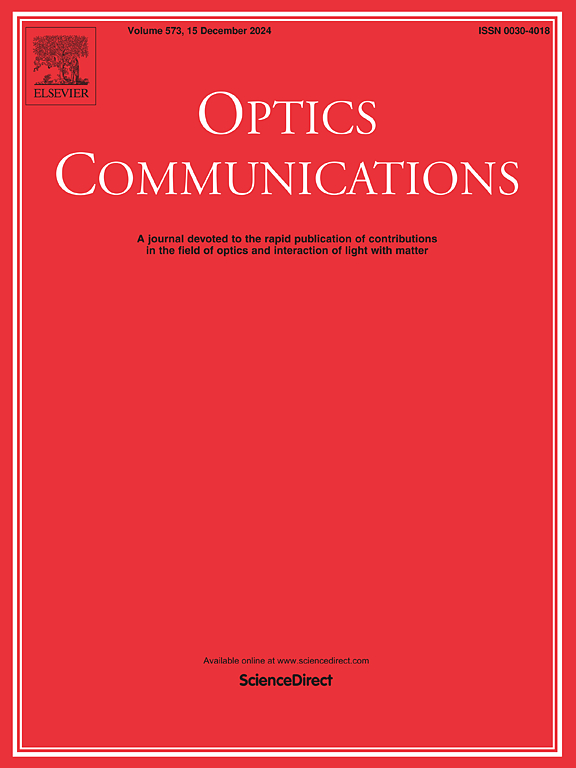Ultra-highly sensitive Fano resonator with dynamic tunability based on plasmonics
IF 2.2
3区 物理与天体物理
Q2 OPTICS
引用次数: 0
Abstract
A novel Fano resonator can be dynamically tuned as well as keep pretty high sensitivity at the same time. The Fano resonator is designed by a triangular ring-like cavity coupled with a metal–insulator–metal (MIM) waveguide, enabling it to resonant in the terahertz band. The device’s performance is analyzed using the finite element method (FEM), and its resonances are validated with multimode interference coupled-mode theory (MICMT). The simulation results show that triangular ring-like cavity structure coupled with the rectangular structure will excite two asymmetric Fano resonances. According to the Fabry–Pérot (FP) resonant theory, the Fano resonant frequency can be easily manipulated by changing the cavity structure parameters. In addition, by integrating graphene into the resonator, it is possible to significantly shift the Fano resonance peak by altering the Fermi energy level, reaching up to 229 GHz. The Fano resonators are also very sensitive to the medium they interact with, achieving a maximum figure of merit (FOM) of 25,853. Finally, the Fano resonator is applied in cancer cell detection to expand the detection band while maintaining accurate detection. The proposed resonator’s superior performance offers potential in medium detection, narrowband filtering, and frequency selection, etc.
求助全文
约1分钟内获得全文
求助全文
来源期刊

Optics Communications
物理-光学
CiteScore
5.10
自引率
8.30%
发文量
681
审稿时长
38 days
期刊介绍:
Optics Communications invites original and timely contributions containing new results in various fields of optics and photonics. The journal considers theoretical and experimental research in areas ranging from the fundamental properties of light to technological applications. Topics covered include classical and quantum optics, optical physics and light-matter interactions, lasers, imaging, guided-wave optics and optical information processing. Manuscripts should offer clear evidence of novelty and significance. Papers concentrating on mathematical and computational issues, with limited connection to optics, are not suitable for publication in the Journal. Similarly, small technical advances, or papers concerned only with engineering applications or issues of materials science fall outside the journal scope.
 求助内容:
求助内容: 应助结果提醒方式:
应助结果提醒方式:


